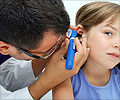SARS-CoV-2 virus may infect the inner ears, thereby causing hearing and balance problems.It is therefore imperative for the clinicians to be mindful of even the auditory symptoms as a manifestation of COVID-19 infection.
- COVID-19 affects almost every cell of the body via ACE2 receptors
- However, not often COVID patients are evaluated for their auditory symptoms
- As a new study finds the presence of ACE2 receptors in the inner ear, scientists urge the need for hearing and balance symptoms in COVID-19
Read More..
Models for Inner Ear Infection
To associate these symptoms as a cause of inner ear infection from COVID-19, the Massachusetts Eye, and Ear scientists developed a novel cellular model of the human inner ear and hard-to-obtain adult human inner ear tissue to depict the viral infection.The team created the cellular models by transforming the human skin cells into induced pluripotent stem cells. These stem cells were further differentiated into several types of inner ear cells like hair cells, supporting cells, nerve fibers, and Schwann cells (insulates neurons).
In addition, the human inner ear tissues were obtained from patients who were undertaking surgery for severe attacks of vertigo (due to specific disorders) or hearing loss and dizziness (due to tumors).
The types of hair cells utilized in the study were
- Vestibular hair cells – involved in sensing head motion and maintaining balance
- Cochlear hair cells – involved in hearing
Manifestation of COVID-19
The study team observed a pattern of infection in human inner ear tissue that was congruous with the ear-related symptoms post COVID-19 in a group of 10 study patients. All 10 patients had mild to profound hearing loss, 9 of 10 patients had tinnitus, and 6 had vertigo.This was due to the presence of ACE2 receptors and specific enzymes (furin and transmembrane protease serine 2) on the hair cells and Schwann cells that aid the SARS-CoV-2 viral fusion with the host cell.
Thus it was stated that the SARS-CoV-2 virus may damage the hair cells of the inner ear (essential for hearing and balance) and also to a lesser extent – Schwann cells (cells that insulate peripheral neurons).
The presence of proteins for SARS-CoV-2 entry was also demonstrated in cochlear hair cells in mice models. This was also prominent among 6 study patients (out of 10) who had reduced or absent otoacoustic emissions on auditory stimulation.
However, other inner ear cells were not prone to SARS-CoV-2 infection.
Need for Inner Ear Evaluation
"Initially, this was because routine testing was not readily available for patients who were diagnosed with COVID, and also, when patients were having more life-threatening complications, they weren't paying much attention to whether their hearing was reduced or whether they had tinnitus. We still don't know what the incidence is, but our findings really call for increased attention to audiovestibular symptoms in people with COVID exposure," says Dr. Konstantina Stankovic, former chief of otology and neurotology at Massachusetts Eye and Ear and now, Bertarelli Foundation Professor and chair of the Department of Otolaryngology-Head and Neck Surgery at Stanford University School of Medicine, who co-led the study.The possible route via which the coronavirus might gain an entry to the inner ears is the Eustachian tube – joins the nose to the middle ear. The virus may also affect the cranial nerves of the inner ear in the brain by gaining access through small openings around the olfactory nerves (nerves that supply the sensation of smell).
“This article provides very compelling evidence that Sars-CoV-2 infects the inner ear, and may be causally related to the hearing and balance symptoms in a number of patients with COVID-19 infection. Another exciting advance for our field is the use of 2D and 3D in vitro organoids to observe Sars-CoV-2 infection of the inner ear. This provides a powerful platform to study the impact of a number of other exposures, including other infections, toxins, and cancers, on the inner ear,” says Yuri Agrawal, a professor of otolaryngology-head and neck surgery at Johns Hopkins School of Medicine, who was not involved in the study.
The team further plans to evaluate possible therapeutic management of the inner ear infections by SARS-CoV-2 and other viruses, using human cellular models.
Reference:
- Study finds the SARS-CoV-2 virus can infect the inner ear - (https://news.mit.edu/2021/sars-cov-2-inner-ear-1029)
Source-Medindia










